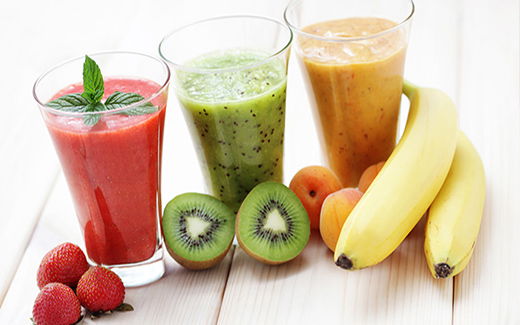Are fruit and vegetable powders good for you?
Fruit and vegetable powder is prepared by dehydrating fruit and vegetable juice, pulp, and fruit into powder or crushed granules. It retains all or part of the flavor, fiber, color, nutrition and other ingredients of the fruit and vegetable, and becomes a healthy ingredient for the taste and flavor of the production of food.
Around 2000, fruit and vegetable powder began to gradually enter the food ingredient market, initially mainly used in convenience foods, and then gradually used in functional solid beverages, tableted candies, and seasonings. By 2010, functional solid beverages such as probiotic powder, Enzyme powder, protein powder, meal replacement powder, etc., most of them start to use fruit and vegetable powder for flavoring. The advantages are natural health, convenient application, reduced seasoning research and development time, and product properties are relatively stable. Until now, fruit and vegetable powder has become an indispensable ingredient for natural seasoning, and its use is unlimited and there is no safety risk. And gradually increase the demand for functional fruit powder, such as acerola powder, prickly pear powder, cranberry powder, elderberry, kale powder and so on.

Classification of fruit and vegetable powder according to production process
1. Spray-dried fruit and vegetable powder. It is mainly made of fruit juice, concentrated juice, and slurry after instantaneous high temperature spray drying. The advantages of the product are fine powder, uniform color and taste, good rehydration, stable properties, easy control of the production process, and production consumption. It has moderate advantages and large production capacity. The disadvantages are: the product needs to use excipients as carriers; the juice content should not be too high; the color and flavor are partially lost in the process, heat-sensitive materials are easy to oxidize, and have strong hygroscopicity; spray-dried fruit and vegetable powder is still the mainstream product, more and more Recognized by the market.
2. Freeze-dried fruit and vegetable powder mainly uses frozen fruit to sublimate the water in the fruit under low-temperature vacuum conditions to obtain dried fruit, which can be made into whole, sliced, diced, and ground into powder, advantages of freeze-dried fruit and vegetable powder. It is able to retain most of the flavor and color of fruits and vegetables, keep nutrients from being lost, and can retain 100% of the solids of fruits and vegetables, with high fiber content and good rehydration. The disadvantage is that the process consumes relatively high power, is easy to change color, is not resistant to high temperatures, and has poor solubility. Such as Freeze dried Blueberry powder.
3. Drum-dried fruit and vegetable powder mainly for varieties with high starch content, after beating, it is drum-dried and made into flakes and powder products. The advantage is low energy consumption and stable product properties; the disadvantage is that the product has strong limitations. Only a few products are suitable for this drying method and cannot be popularized.
4. Hot-air drying fruit and vegetable powder: Mainly blanch the stems and leaves of fruits and vegetables, dry them with a hot-air dryer, and then make powder or granules. The product has stable properties, general rehydration, low energy consumption, and hygienic indicators. It is difficult to control and can only be used after sterilization. This method is generally used for vegetable products, and it was first used for instant noodle seasoning packets. With the improvement of pre-processing technology, hot air drying fruit and vegetable powder has more and more extensive applicability.
To sum up, the applicability of fruit and vegetable powder is determined by factors such as production process and fruit characteristics. Spray drying is easy to dissolve in water and is the best ingredient to provide fruit juice taste. Freeze-dried fruit and vegetable powder is rich in fruit fiber and has a real taste. High cost, mostly used in foreign breakfast cereals, domestic application is relatively small, hot air drying cost is low, sanitary indicators are difficult to control, need to be used after sterilization, increase the use cost, product stability is not strong; drum drying fruit and vegetable powder is mainly a small number Fruits and vegetables with high starch content, such as purple potatoes, sweet potatoes, pumpkins, etc.
Generally speaking, spray-dried fruit and vegetable powder has many varieties, wide applicability, production efficiency, product quality, and cost-effectiveness, and the market prospect is broad. Such as kale juice powder, red beet root powder.
